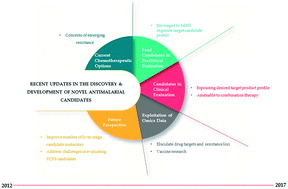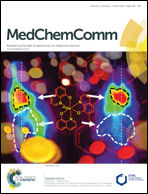Recent updates in the discovery and development of novel antimalarial drug candidates
Abstract
Though morbidity and mortality due to malaria have declined in the last 15 years, emerging resistance to first-line artemisinin-based antimalarials, absence of efficacious vaccines and limited chemotherapeutic alternatives imperil the consolidation of these gains. As a blueprint to steer future designs of new medicines, malaria drug discovery recently adopted a descriptive proposal for the ideal candidate molecules and drugs likely to successfully progress into the final stages of clinical development. As an audit of recent developments in the chemotherapy of malaria in the last five years, this review captures a landscape of diverse molecules at various stages of drug development and discusses their progress. In brief, we also discuss how omics data on Plasmodium has been extensively leveraged to identify potential vaccine candidates and putative targets of molecules in development and clinical use as well as map loci implicit in their modes of resistance. Future perspective on malaria drug development should involve a reconciliation of some of the challenges of the target candidate profiles (TCPs), specifically TCP3, with the promise of effective anti-hypnozoite medicines. Similarly, with the recent development of a humanized mouse model that can evaluate the prophylactic potential of candidate drugs, we argue for increased effort at identifying more liver-stage molecules, which are often only secondarily prioritized in conventional screening programs.



 Please wait while we load your content...
Please wait while we load your content...